The Jane & John Justin Foundation Omni Theater at the Fort Worth Museum of Science and History opened to the public in December 2024 after an 18-month renovation project.
Previously known as the Omni IMAX Theater, the new Jane & John Justin Foundation Omni Theater features advanced technology to immerse guests in an 8K+ digital experience. Powered by Cosm Technology, it is the world’s first LED digital dome of its size in a museum, establishing the Fort Worth Museum of Science and History as a global leader in advanced visual technology.
The project involved removing and reconstructing the dome, increasing its size and brightness with nearly 12,000 LED modules. This renovation allows a new generation of Omni-goers to experience transformative content.
The Omni Theater features documentaries that offer unique learning experiences for over 50,000 field trip students each year. Its film lineup includes award-winning titles like Jane Goodall: Reasons for Hope and Cities of the Future. Beyond the technology update, a major goal was to ensure the Omni Theater was accessible to all. It is now fully ADA compliant, with a one-level lobby and queuing area, new wider seats for up to 276 guests, and added wheelchair-accessible spaces.
We speak to Regina Faden, president of Fort Worth Museum of Science & History, and Kirk Johnson, COO of Cosm, a global technology company that builds end-to-end solutions for immersive experiences, to learn what this project means, both for the local community and the museum sector as a whole.
Fort Worth Museum of Science and History
The Fort Worth Museum of Science and History was founded nearly 80 years ago by a group of 16 women in the community who wanted to create enriching experiences for children.

“That mission remains at our core today, especially through our Museum School, a preschool program that continues to thrive,” says Faden. “What makes us unique is our blend of science and history—two fields that aren’t always combined—and our focus on telling the story of Fort Worth and the surrounding region, from the age of dinosaurs to the present day.
“As the city grows, we remain a place where families come to learn and explore. Unlike traditional art museums, we offer hands-on experiences that allow kids to play, discover, and dynamically engage with science and history.”
The museum offers interactive exhibits and immersive experiences designed to engage children and families in ways that go beyond traditional museum visits. Highlights include DinoLabs & DinoDig, where guests can explore prehistoric fossils and dig for dinosaur remains. It is also home to the Innovation Studios, a creative space where kids and families can experiment with STEM concepts through hands-on activities.
The original Omni Theater opened in 1983 and has been a much-loved feature of the museum. For more than four decades, it used IMAX projection technology to engage and entertain more than 10 million visitors. The renovation brings this community asset up to date for generations to come.
The Jane & John Justin Foundation Omni Theater, powered by Cosm technology
Cosm provided the original dome structure for the former Omni Theater and has an ongoing relationship with the museum.

“Over the past decade, we’ve been discussing upgrading their ageing technology and exploring various ideas and concepts,” says Johnson. “At the same time, we were developing our CX System LED dome display system in the background. After acquiring Evans & Sutherland and Spitz in April 2020, we built our Experience Center in Salt Lake City, featuring a 20-meter CX System LED dome. This allowed us to refine the engineering, test content, and perfect the overall experience.”
Once Covid restrictions eased, Cosm invited the leadership team from the Fort Worth Museum to visit and experience the technology firsthand. “The moment they saw it in action, they were sold. From there, it was just a matter of finalising their fundraising efforts and working together to bring our CX System LED dome technology to the Omni Theater in Fort Worth."
Faden adds: "We chose to partner with Cosm again to redevelop the Omni Theater because of their decades-long expertise in planetariums and immersive education. They have a deep understanding of the technology and learning experiences we wanted to create, making them the perfect fit for this project. Our partnership with them is ongoing, and our missions align meaningfully - providing transformative, educational experiences for our visitors.
“It’s hard to describe just how immersive the new theatre is, but it truly offers a one-of-a-kind experience that has to be seen to be believed."
The CX System LED Dome
Cosm’s CX System at the Omni Theater, featuring a 23-meter LED dome and immersive software, delivers an 8K+ resolution display with an incredible 44 million pixels. At least 8,000 individual LED pixels are distributed across every arc of the dome, ensuring super-high resolution and crystal-clear detail.
The result is over 150 times brighter than a typical planetarium display and 40 times brighter than the original film system at the Omni. Even more significantly, that brightness is evenly distributed across the dome, eliminating bright spots and inconsistencies. The CX System LED dome also boasts an exceptional contrast ratio, ten times greater than any projection system currently available. This allows for deeper blacks, richer colours, and an overall more immersive experience.
“When you combine this level of visual quality with the flexibility of our CX System, the possibilities are endless,” says Johnson.
“CX System is a game-changer because it overcomes the challenges of traditional projection, like cross-bounce and limited contrast, delivering an unmatched level of immersion and realism. It transports people to places they could never otherwise go, democratising access to the universe and beyond. Planetariums have always taken audiences to space, but now we can take them anywhere—ancient cities, deep oceans, live global events, or even immersive cultural experiences.
“In the morning, it can function as a planetarium; in the afternoon, it can be a virtual aquarium; in the evening, it can be a safari adventure. It can host corporate events, live performances, product launches, and even dance parties.
“The combination of the LED dome display’s quality and the immersive software engine’s flexibility transforms what’s possible for planetariums and science centres, delivering an emotional, awe-inspiring experience like never before."
Engaging the next generation of visitors
The new LED dome technology brings a level of flexibility and innovation that wasn’t possible with the previous IMAX theatre, says Faden:
“Previously, we were limited by large film reels that had to be swapped out every 30 minutes, restricting what we could show. We’re still exploring the full potential of this technology. Imagine it as a giant interactive screen—we could have live lectures from the International Space Station or connect audiences in Fort Worth with experts across the globe. Fort Worth is excited to be on the cutting edge of this technology, leading the way in immersive education.”
In today’s world, museums need to give people a reason to step away from their screens—not just kids, but adults too. This new technology brings the ‘wow’ factor back to the science museum, making education fun, exciting, and engaging like never before.
“We can’t teach how we used to,” says Johnson. “Education today has to be immersive and interactive, combining excitement with learning in ways that genuinely capture attention.”
This technology helps students understand the three-dimensionality of the world in a way that feels natural to them. It’s an interactive, hands-on approach that makes learning dynamic and unforgettable. “More than just teaching facts, it inspires curiosity – and hopefully, encourages the next generation to go out and accomplish amazing things."
Education has always been a cornerstone of the Omni Theater. Generations of Fort Worth families have visited the theatre in what Faden describes as a rite of passage: “With 50,000 schoolchildren visiting each year, we’re now inspiring the next generation of learners, ensuring that this cherished experience continues for years to come."
Modernising the museum
The new Omni Theater plays a crucial role in the museum's broader strategy for growth and modernisation.
“People today have different expectations from museums,” says Faden. “As a science museum, innovation is in our DNA, and we’re focused on educating visitors about the possibilities through cutting-edge technology like the digital dome. But this isn’t just about the theatre. We’re also looking at how we tell the story of Fort Worth itself – a city that, though not ancient, has always had to innovate and adapt to its changing economy, from railroads and oil to cattle and beyond.
“Fort Worth’s spirit of innovation and optimism is infused into everything we do here. Just as the city has reinvented itself over time, we are constantly evolving, offering new, relevant experiences for our visitors.”
Johnson adds that this upgrade honours the legacy of the original Omni Theater by restoring the ‘wow’ factor that made it an iconic experience for generations.
“Our CEO, Jeb Terry, grew up around the Fort Worth area and often talks about how visiting the Omni as a kid inspired him—that sense of awe and wonder. Over time, as technology advanced, that original magic faded. Now, we’re not just bringing it back—we’re amplifying it in ways that were never possible before.
“This is now the world’s largest, most immersive display in any science museum. It allows the Omni Theater to continue its legacy of inspiring young minds, sparking curiosity, and creating unforgettable experiences. More than just entertainment, this technology has the power to educate, engage, and motivate the next generation to explore science, pursue knowledge, and, ultimately, make the world a better place.
“There’s no better way to honour the past while shaping the future."
Accessibility at the Jane & John Justin Foundation Omni Theater
The museum has also worked to ensure everyone in the community can enjoy this new immersive experience by prioritising accessibility and inclusivity. For example, the theatre lobby, which was previously made up of six different levels, has been completely redesigned to be one level, ensuring it’s ADA- accessible for everyone, including those in wheelchairs.
“No matter your mobility needs, you can easily access the theatre through elevators and ramps, making the space more inviting for all,” says Faden.
Additionally, the museum partnered with Cosm to offer Spanish-language films, catering to Fort Worth's diverse population, particularly the large Spanish-speaking community.
“About 40 percent of Fort Worth public school students are bilingual or learning English as a second language. This means it's not just the children but their parents who need to feel welcomed here. By making these changes, we're ensuring that our museum is a place where all families, regardless of their background or language, feel at home and enjoy these incredible educational experiences."
Sustainability
The LED dome technology is much more sustainable than traditional projection systems in a few key ways, explains Johnson:
“First, LEDs are inherently more efficient. Just like we’re switching to LED lighting in homes and buildings to save power, the same efficiency applies here. To achieve the brightness levels we get with an LED dome using projectors would be impractical – you’d need so many projectors, both in terms of installation and operation.
"Plus, unlike projectors, which use almost the same amount of power whether they’re displaying black or a bright image, LEDs only consume power for the image they’re displaying. When the image is black, the LEDs aren’t drawing electricity.”
Another way LEDs are more sustainable is in their longevity:
“Traditional projection systems, especially lamp-based ones, require frequent maintenance. You’d have to replace lamps every 1,500 to 2,000 hours, and laser-based systems need replacement after 20,000 to 25,000 hours, at which point they lose around 50 percent of their brightness. With an LED dome, however, the system can last 15 to 20 years without needing the same costly replacements.”
Operators would likely need to replace the projection system two to four times during that lifespan, whereas the LED dome stays intact throughout.
Lastly, LED technology reduces downtime. Traditional projection systems often have multiple projectors. So, when one goes down, they can lose up to half of the dome’s image. In contrast, with an LED system, if one module fails, it’s easy to replace it with a spare without disrupting the entire experience. This reliability and long lifespan make LED domes a far more sustainable and cost-effective solution for science centres and planetariums.
Impact on the museum sector
In terms of what he hopes the broader impact of this project will be on the museum sector, Johnson says:
"This technology genuinely amazes people who see it, and many want it for their own facilities. It’s just a matter of time before they secure the necessary funding and upgrade their spaces.
“Fort Worth Museum of Science and History has set a new global standard for museum experiences, and I believe that the Omni Theater will serve as a model for other science museums. They’ll be able to visit and see how it’s been implemented, experience the technology firsthand, and understand how the guest experience has been elevated.
"They can also talk to the leadership at the museum to get insights into the process, including the modifications needed and how to manage it.”
The technology has a unique wow factor that will reinvigorate science museums and planetariums.
“It’s exciting and engaging enough to bring people back to these institutions, inspiring them in ways we haven’t seen before. That excitement will help attract more visitors and especially encourage the youth to learn about science and pursue careers in STEM fields. Ultimately, this could contribute to the creation of innovative technologies and a better future.
“In the long run, I hope this project helps science museums accomplish their missions, whether inspiring curiosity, educating communities, or driving the next generation of thinkers, creators, and innovators. This technology is not just about gadgets and screens; it amplifies museums' impact on visitors’ lives, inspiring them to do great things."
Visitor reactions
While it has only been operational since December 2024, the new Omni Theater is undoubtedly already having an impact on visitors to the Fort Worth Museum of Science and History.
“The most exciting part is seeing visitors' reactions the first time they experience the new technology,” says Faden. “There’s something magical about sitting in the theatre with people as they first encounter the immersive experience.
“We had some students watching a documentary called Animal Kingdom. After the film ended, the kids were so moved that they spontaneously started clapping and dancing to the music, which was a pure, joyful response. They were deeply engaged and excited, pointing out things to each other and fully absorbed in the experience. But it’s not just the kids—the adults’ reactions are equally rewarding. Their reactions show how powerful and transformative the experience is.
“It’s all about that first time. Watching visitors experience it for the first time, seeing their faces light up and their genuine awe—that’s the real thrill. It’s not just about the technology; it’s about bringing people into something new and watching their imaginations expand.
“It’s exciting to think about all the possibilities for future experiences and how people will continue interacting with this technology.”
Charlotte Coates is blooloop's editor. She is from Brighton, UK and previously worked as a librarian. She has a strong interest in arts, culture and information and graduated from the University of Sussex with a degree in English Literature. Charlotte can usually be found either with her head in a book or planning her next travel adventure.


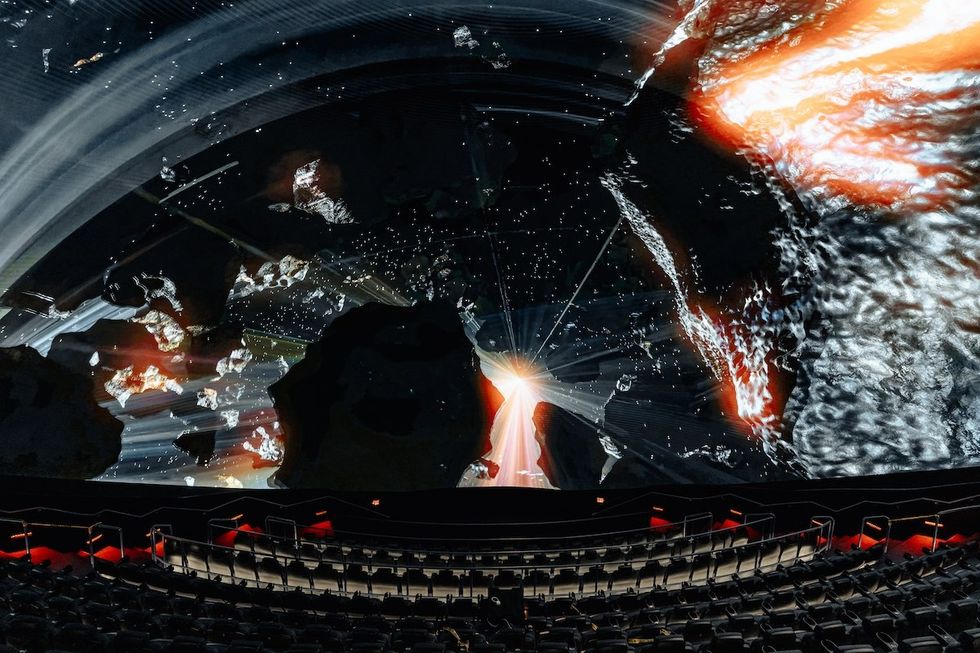
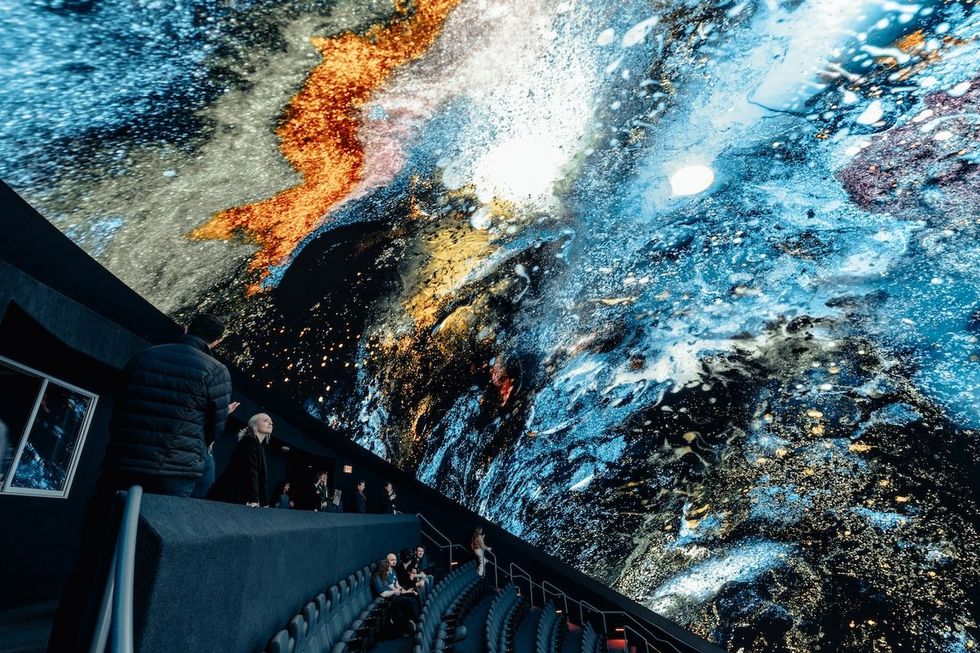
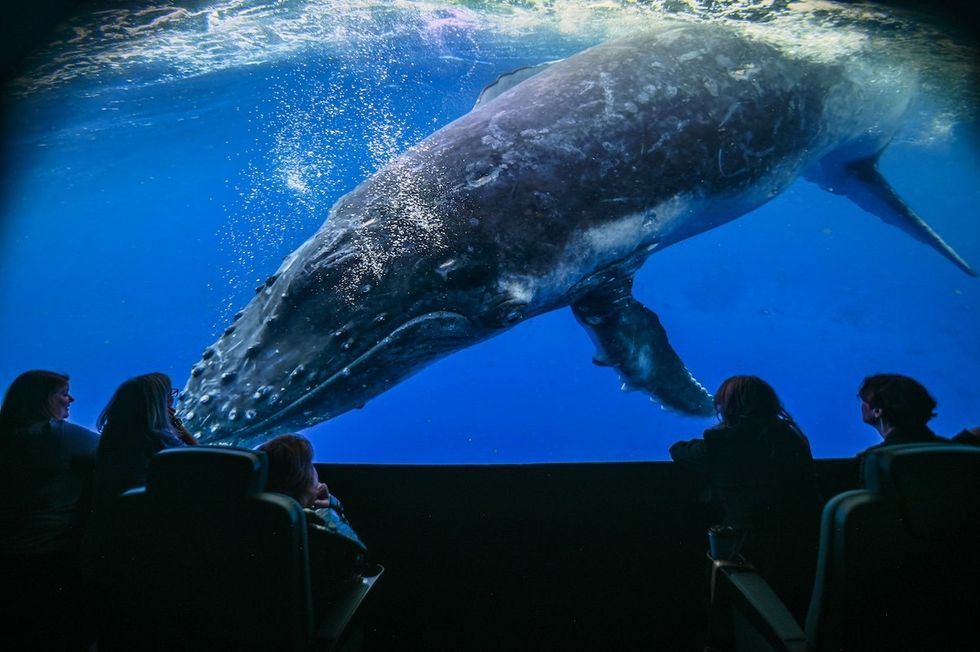
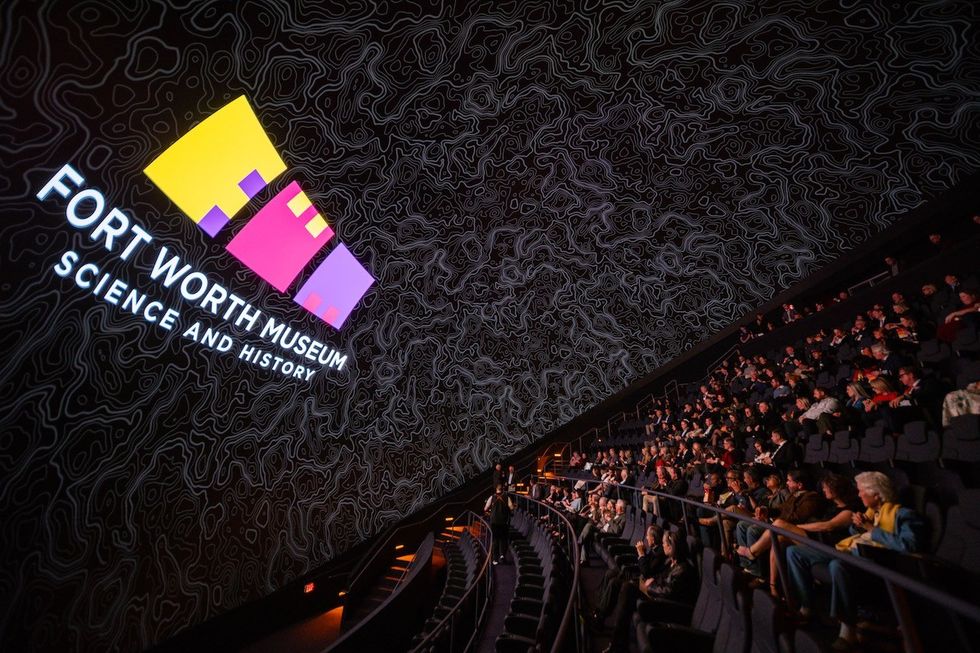
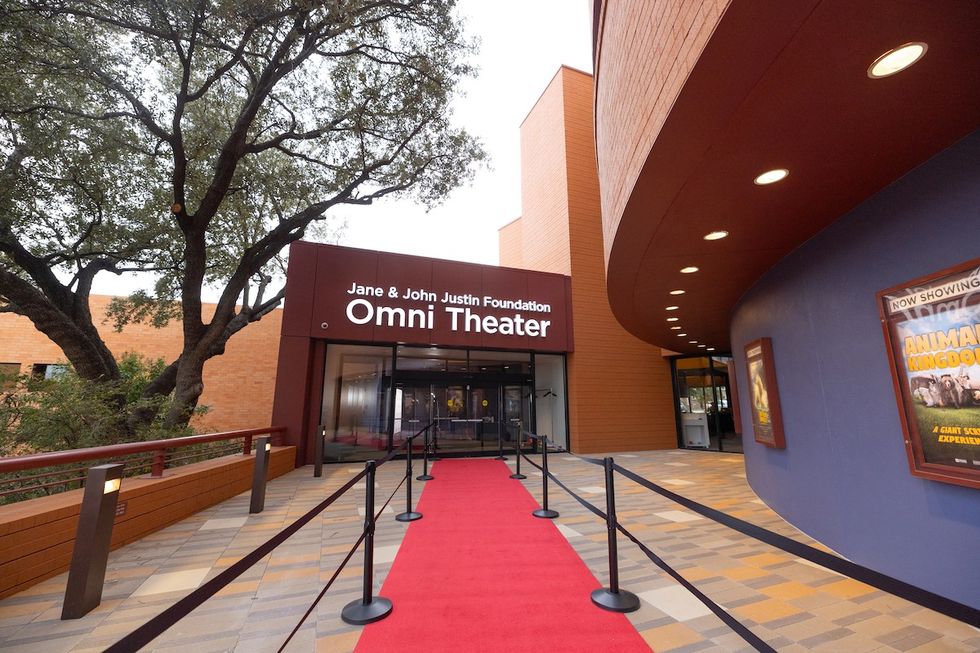
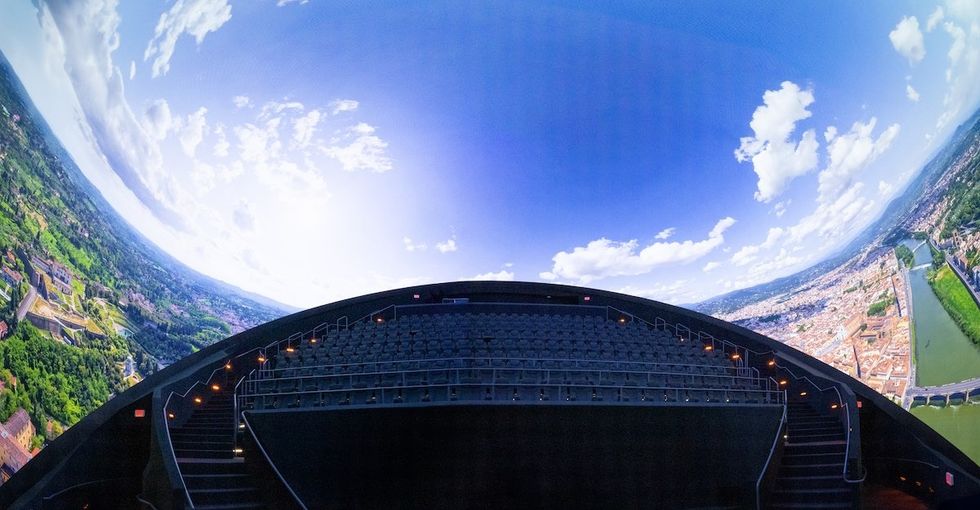
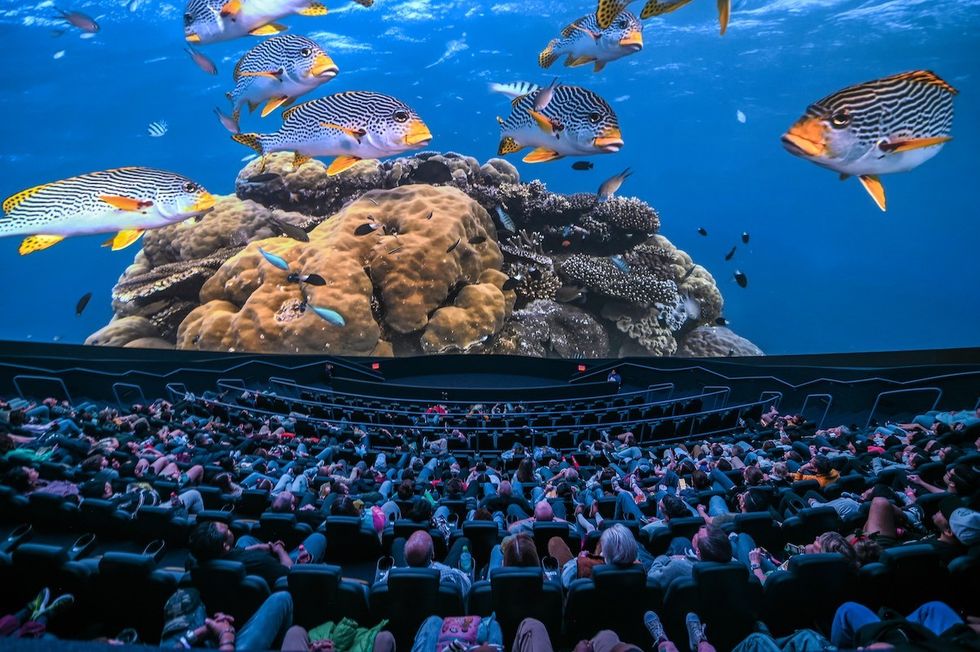






 TM Lim and Adam Wales
TM Lim and Adam Wales









 Toby Harris
Toby Harris Hijingo
Hijingo Flight Club, Washington D.C.
Flight Club, Washington D.C.
 Flight Club Philadelphia
Flight Club Philadelphia Flight Club Philadelphia
Flight Club Philadelphia Bounce
Bounce Hijingo
Hijingo Bounce
Bounce
 Fernando Eiroa
Fernando Eiroa











 Nickelodeon Land at Parque de Atracciones de Madrid
Nickelodeon Land at Parque de Atracciones de Madrid Raging Waters
Raging Waters  Mirabilandia's iSpeed coaster
Mirabilandia's iSpeed coaster Parque de Atracciones de Madrid
Parque de Atracciones de Madrid Ferracci at the ribbon-cutting ceremony for Nickelodeon Land at Mirabilandia, with (left) Marie Marks, senior VP of global experiences for Paramount and (cutting the ribbon) Sabrina Mangina, GM at Mirabilandia
Ferracci at the ribbon-cutting ceremony for Nickelodeon Land at Mirabilandia, with (left) Marie Marks, senior VP of global experiences for Paramount and (cutting the ribbon) Sabrina Mangina, GM at Mirabilandia Tropical Islands OHANA hotel
Tropical Islands OHANA hotel Elephants at Blackpool Zoo
Elephants at Blackpool Zoo  Tusenfryd
Tusenfryd
 Andrew Thomas, Jason Aldous and Rik Athorne
Andrew Thomas, Jason Aldous and Rik Athorne







